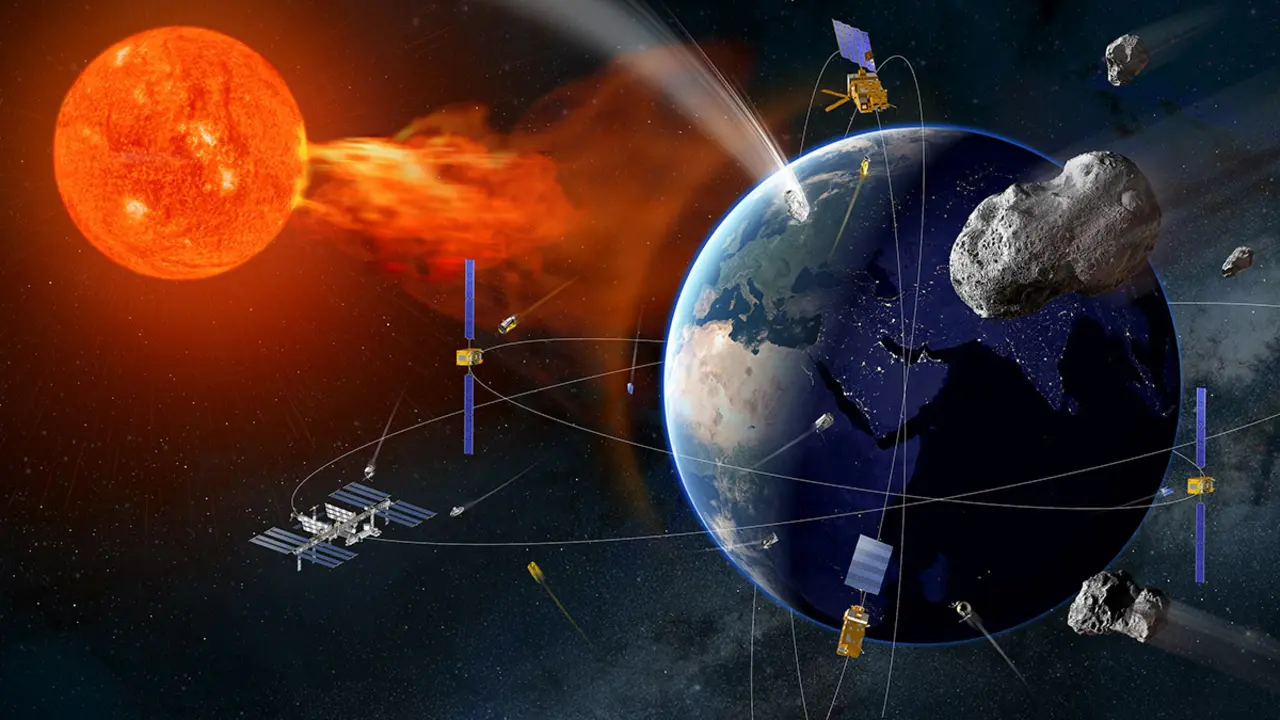The Government of Catalonia launches the first Spanish 5G satellite into orbit from Russia

The Catalan government's first satellite is scheduled to fly into orbit next Saturday, March 20, at 07:07 and 12 seconds, Spanish peninsular time. It will be launched at an altitude of 500 kilometres by a Russian Soyuz 2 launcher from the Baikonur Cosmodrome, a military site leased by the Kremlin from the Central Asian republic of Kazakhstan.
Financed with official funds amounting to 1.7 million euros, it is the starting point of a much more ambitious project that aims to invest around 18 million euros. These funds are intended to support the creation of a space sector that by 2025 will have achieved a turnover of 280 million euros and generated 1,200 new jobs.
This first satellite is part of the so-called Catalonia New Space Strategy approved on 27 October 2020. Its aim is to develop a business network made up of small companies dedicated to providing services based on small, low-cost and quick-to-manufacture spacecraft. The Catalan initiative is not a part of Spain's Space Strategy, simply because the government of Pedro Sánchez has not approved one.

The device that will become the pioneer of the Catalan autonomous region's New Space is a CubeSat 3U type nano-satellite, measuring 30x10x10 centimetres and weighing around ten kilos. It will be the first link in a future constellation of half a dozen platforms dedicated to establishing 5G connectivity, which the Catalan authorities intend to finance with the European Union's Next Generation funds dedicated to digitalisation, access to information and climate change mitigation.
The satellite that heads the future Spanish-registered fifth-generation communications constellation has been christened Enxaneta, the name given to the child that climbs to the top of a human tower called a castell (castle in Spanish) and raises its arm without the human group that supports it collapsing. The name Enxaneta is the result of a contest promoted by Infok, a news programme of the Catalan Government's TV3 television channel dedicated to the world of children.

The contracting of nano-satellite has not been carried out directly by the Autonomous Government of Catalonia or by the Department of Digital Policies and Public Administration headed by the Minister Jordí Puigneró.
The contractual stipulations have been materialised through the Institute for Space Studies of Catalonia (IEEC), a private foundation created in 1996 and dedicated to promoting and disseminating all kinds of activities, studies and projects related to technology and scientific research linked to space.
Funded by the Government of Catalonia, the Spanish National Research Council from the Ministry of Science and Innovation and the Universities of Barcelona, Autónoma de Barcelona and Politècnica de Catalunya, the IEEC's role in Enxaneta is to monitor and provide technical assessment of the entire project, including the reception of the data and its use.

IEEC's work consists of "acting as experts between the Government of Catalonia and the companies in charge of the projects," says director Ignacio Ribas. Among the plans is also to generate products and services that are of general interest, with the aim "for Catalonia to become a data provider on a global scale".
The company responsible for the design, development, manufacture and testing of the Enxaneta has been the British company Open Cosmos, which has carried out its tasks at its headquarters in Harwell, some 70 kilometres west of London, and Castelldefels, 26 kilometres from Barcelona.

The satellite will have an estimated operational lifetime ranging from four to five years. Once in space, its function will be to provide Internet of Things (IoT) connectivity services throughout Catalonia, a task that falls to the Spanish telecommunications operator Sateliot, which specialises in 5G technologies.
The station for monitoring, control and data reception has been set up at the Montsec Astronomical Observatory, some 70 kilometres north of Lleida and about 200 kilometres northwest of Barcelona. Information collected throughout Catalonia, including remote areas or areas without terrestrial communications networks, will be sent to the observatory twice a day.

The Autonomous Community authorities are confident that Enxaneta will help determine the flow of water in rivers, monitor herds and wildlife, and collect data from weather stations located in places that are difficult to access. Once verified, the data will be sent to the different departments of the Autonomous Community for use.
Along with the Government of Catalonia's satellite, 37 other devices will travel into space, the largest of which is CAS500-1, a 500-kilogram electro-optical observation spacecraft from the Korea Aerospace Research Institute (KARI). The rest are small platforms from Argentina, Brazil, Canada, Canada, Germany, Hungary, Israel, Italy, Japan, the Netherlands, Slovakia, the UK and Thailand.

The Challenge One of the Tunisian company Telnet, a satellite similar to Enxaneta and also dedicated to the Internet of Things, is also travelling, which will serve as the basis for the creation of the space ecosystem for Tunisia and surrounding countries. On the same flight will ascend the DMSat-1 of the Emirates' Mohammed bin Rashid Space Centre, a mission that will use images in the visible and near-infrared bands to detect aerosols and greenhouse gases in the atmosphere of the Emirates; and Saudi Arabia's Najm-1, a small experimental Earth observation device.









